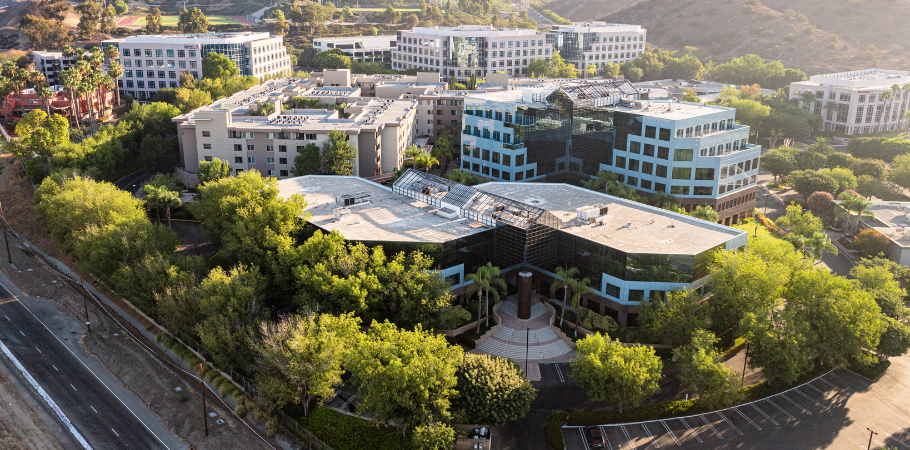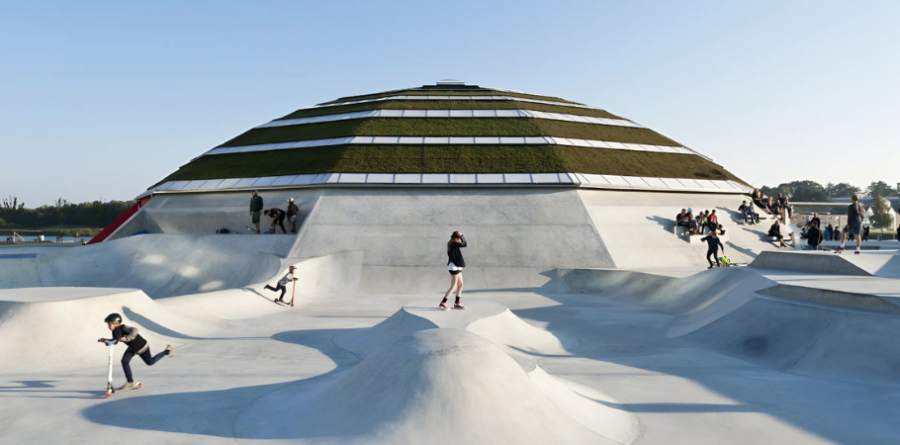
On a global scale, businesses are investing heavily towards the goal of net-zero, reducing emissions and sustainable development. In many aspects of green transition and sustainable development, high-rise buildings have emerged as a hotspot for energy consumption. Thus, they have become one of the targets to prioritize “greening”. Since then, the green building trend was blooming and is increasingly widespread.
What is the Green Building Trend?
Unlike commuter towns from the Industrial Revolution and 20th-century developmentalism, today’s urban planning focuses on eco-neighbourhoods. These projects aim to lessen environmental impact. Moreover, they also encourage citizens to adopt responsible living habits. Using sustainable technologies and materials in building construction is crucial for these initiatives.
A green building trend emphasizes structures that enhance the environment’s quality. To achieve this, buildings must operate efficiently. They should minimize energy, water, and resource consumption to reduce pollution.
Consequences of High-rise Buildings and the Green Building Trend
According to a UNEP report, buildings use up to 40% of global energy and emit about one-third of GHGs. In Europe, 220 million buildings, or 75% of the total, are less energy-efficient due to fossil fuel-powered heating and cooling systems. The World Economic Forum notes that shifting 20% of heating to clean energy could cut CO2 emissions by 9%.
Transitioning energy sources and reducing air pollution can transform traditional buildings into green buildings. This shift can save up to 3 billion euros in healthcare costs by 2030. Given that buildings average a 50-year lifespan, new constructions must meet green criteria and lower emissions to combat climate change long-term.
In Vietnam, as of September 2020, only 83 buildings have LEED certification, with 125 under evaluation. This is quite low compared to the many existing and new structures. Since most electricity comes from fossil fuels, making buildings green poses a significant challenge to Vietnam’s net-zero goals. Thus, finding solutions to align with the green building trend is increasingly urgent to gain a sustainable future.
Green Building Certificates
1. LEED
LEED stands for Leadership in Energy and Environmental Design. They most widely apply this certificate for green building and green office rating systems in the world. This system is applicable to most types of buildings, houses, and public works. LEED provides a framework for building high-efficiency, green, and economical buildings.
LEED-CI is an evaluation system that focuses on interior elements and tenant designs that use part of the space in the building. LEAD-CI has a scope of assessment that covers all internal elements such as floors and walls, lighting systems, interiors, mechanical systems, and the experience of the individual user.
2. BREEAM
BREEAM, which stands for Building Research Establishment Environmental Assessment Method. This is the oldest certification for sustainability assessment to minimize the negative impact of the construction industry on the environment. Similar to other assessment methods, BREEAM assesses building compliance levels based on a scientific, public list of sustainability goals. This system is based on the principle of objective third-party assessment which means that the unit that directly assesses will be completely independent of BRE Global to ensure that the assessment is approved by multiple parties and is of the best quality.
3. WELL
Beside LEED and BREEAN, the WELL Building Standard is also a notable standard in the evaluation of green offices. WELL is a real-world performance-based assessment system that measures, certifies and monitors building elements that affect human health and life. Criteria include air, water, nutrition, light, comfort, physical and mental well-being. WELL has the foundation of medical research on the link between buildings and the health and lives of users.
Hundreds of evaluation criteria of WELL revolve around the impact of the project on the health of users. Some of WELL’s criteria encourage changes in business behaviors through training, regulations, and corporate culture.
How to Respond to the Green Building Trend, Towards a Sustainable Future
1. Reduce power consumption
This seems to be the first option thought of to realize the “green building trend”. However, conventional saving measures do not make much difference without the help of modern technology. In order to measure electricity consumption in each area and each period, buildings need to add corresponding sensors/measuring devices.
Some technologies, such as GoBright, can also measure the energy intensity of each device in the office. From this data, building management solutions (BMS) can calculate the uptime of office areas or equipment to optimize power usage.
HDL Automation is currently testing a technology that allows it to absorb solar energy on the façade of buildings. Then we can reuse it for night lighting or when there is low light.
These days, some buildings use smart glass technology to color the glass, reducing the amount of heat significantly. As a result, we can reduce the energy consumption for building air conditioning systems. They use this type of glass in the W Hotel in San Francisco to replace conventional glass doors.
Moreover, planting many plants in terrace spaces is also a solution. This helps balance the heat exchange between the building and the environment. They applied this solution at Chicago City Hall or Street Dome Stadium in Denmark.

2. Buildings that generate their own energy
The idea of using wind energy to generate electricity in high-rise buildings is no longer a theory. Many buildings installed wind turbines at key projects such as the Philadelphia Eagles stadium and the Bahrain World Trade Center. Thus they can generate part of their own operating electricity.

Currently, there are many other buildings in the world that have incredible structures that adapt to the green building trend. For example, Taiwan’s first green library is in Taipei’s Beitou Park. It is a two-storey building designed to reduce water and electricity consumption thanks to its large windows. The roof is partially covered with photovoltaic cells to generate energy and also collects rainwater for use in the toilets.

3. Use environmentally friendly materials
One more way to respond to the green building trend is using environmentally friendly materials. Recycled materials can quickly create change and reduce the consumption of natural resources.
Currently, the buildings of Amazon, Hulu, HBO and Google all use 100% recycled wood. Modern metallurgical technologies have also allowed the recycling of steel, glass, and aluminum in the construction of buildings. In addition, linoleum, ferrock (an alternative to concrete with a mixture of steel dust and sand) are also new materials for the construction of floors and office floor liners.
Conclusion
Sustainable development on ESG principles is an inevitable trend and creates a comprehensive impact on many different industries. Due to historical factors and old technology, high-rise buildings are being evaluated as hotspots. They are the priorities for transformation to achieve net-zero goals.
In terms of market, the demand for the green building trend is also exceeding the supply, especially in fast-growing markets. However, many real estate developers have not yet focused on this issue.
In the future, the implementation of the green building trend will require the cooperation of many parties, including investors, operators, as well as office tenants. The green building will be an important component in the overall ESG picture of businesses. From that, they will contribute to the development of a more sustainable ecosystem.
See more: 4 Important Benefits of Renewable Energy for Companies


